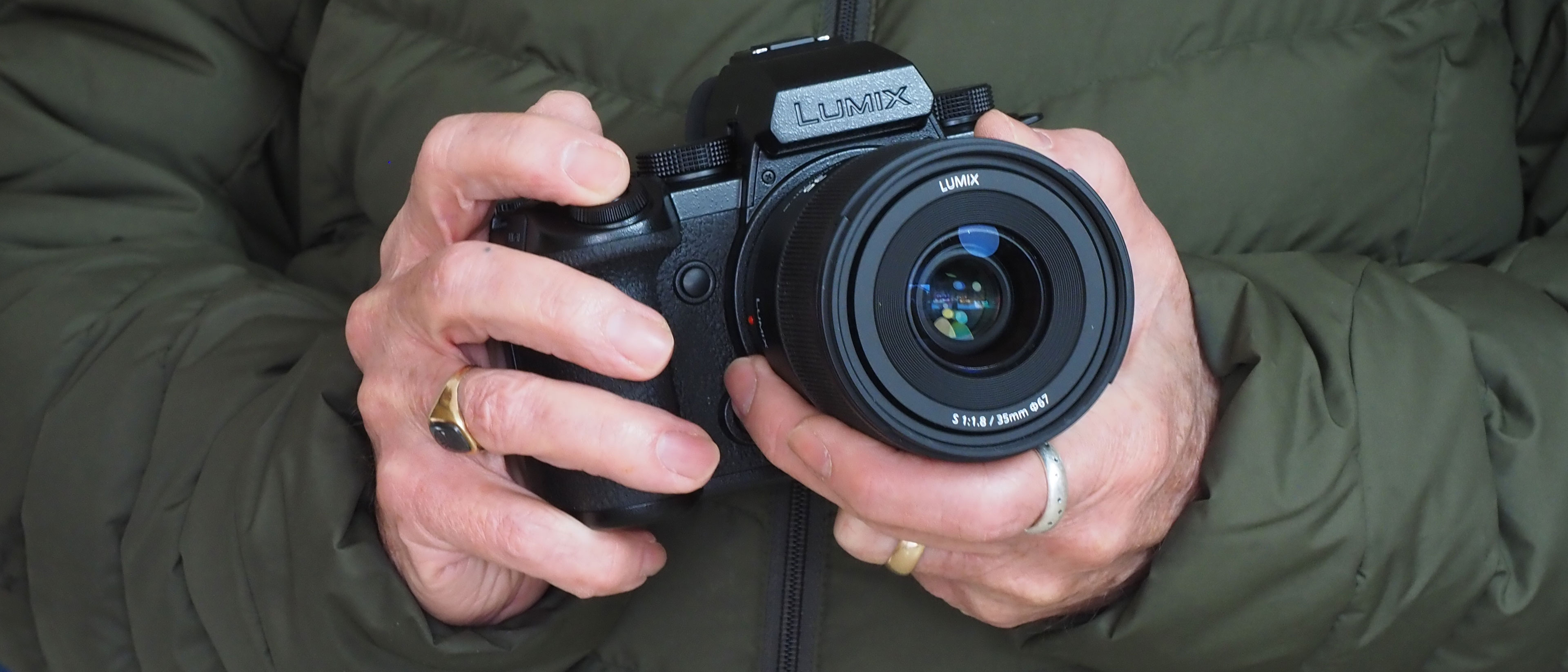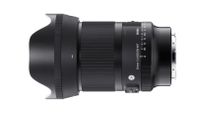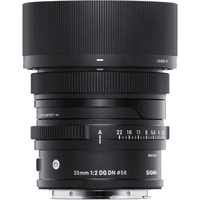Digital Camera World Verdict
It’s easy to be a little disappointed by this lens initially. Its exterior design is stripped down to the point of blandness, and its specifications are unremarkable too. This is a lens you might choose for its value and practicality alone. Actually, though, it’s rather good. Optically it’s perfectly decent for the price being asked, and the lack of focus breathing in video is a pleasant surprise. Perhaps the best surprise of all is the fast and silent AF, which is nice for stills photography but a major advantage for video. It might not be exciting to look at, but the Lumix S 35mm F1.8 is an extremely well-rounded performer at a very good price.
Pros
- +
Fast and silent AF
- +
Good optical performance for the money
- +
Focus breathing suppression
- +
Weather sealing
- +
Light weight
Cons
- -
No aperture ring
- -
F/1.8 is modest by current standards
Why you can trust Digital Camera World
Ultra-fast f/1.4 and f/1.2 prime lenses are headline-grabbing ‘dream’ optics for most of us, but the Lumix S 35mm F1.8 lives in a more affordable and practical world and doesn’t carry quite the same glamor. And yet a 35mm f/1.8 prime is a handy lens to have, not just for classic street photography but environmental portraits too.
Modest as it is, the Lumix S 35mm f/1.8 is amongst the best L-mount lenses right now. We tested it on the Panasonic Lumix S5 IIX, one of the best Panasonic cameras in the range, and one of the best cameras for filmmakers too.
Of course, Panasonic has half an eye on the video and content creation market, and what’s interesting about this lens is not just its individual capabilities, but the fact it’s one of a set of four f/1.8 primes that are practically identical in size and weight. These include a Lumix S 24mm f/1.8, this lens, a Lumix S 50mm f/1.8, and a Lumix S 85mm f/1.8. Stills photographers might pick a couple of primes from this list, but keen content creators might be keen to grab all four, as they can be quickly swapped out without really changing the weight or balance of your video rig.
The Lumix S 35mm F1.8 has some other notable features. It’s dust and splash-resistant for a start, which you don’t always get at this price, it has a sophisticated optical construction designed to suppress focus breathing, and it offers smooth aperture/iris changes while filming.
Is this a glamorous lens? No. Is it effective and practical, though? Absolutely.
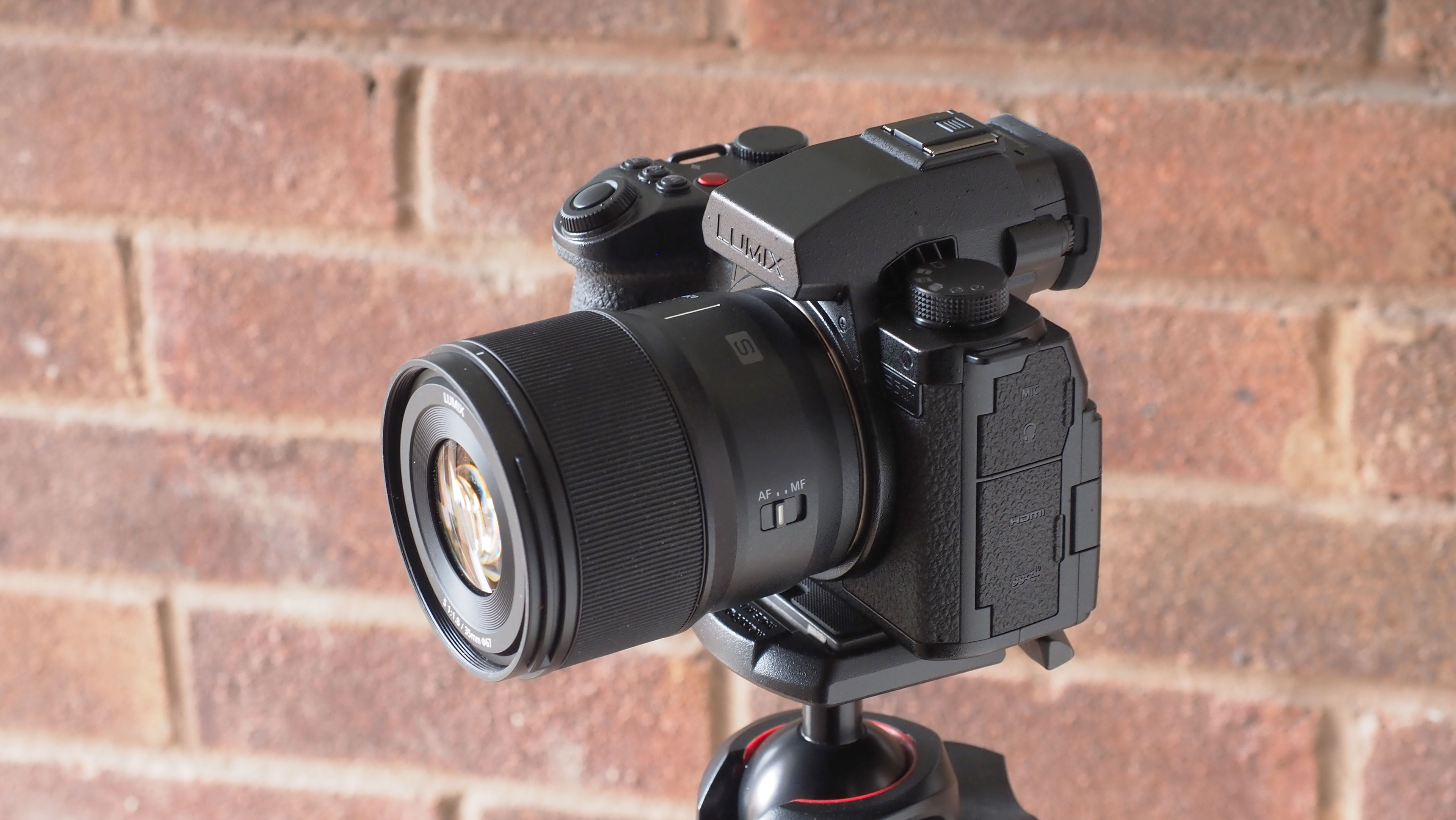
Panasonic Lumix S 35mm f/1.8 specifications
| Mount options | L-mount |
| Lens construction | 11 elements in 9 groups |
| Angle of view | 63° |
| Diaphragm blades | 9 |
| Minimum aperture | f/22 |
| Minimum focus distance | 0.24m |
| Maximum magnification | 0.22x |
| Filter size | 67mm |
| Dimensions | 73.6x82.0mm |
| Weight | 295g |
Panasonic Lumix S 35mm f/1.8 price and availability
The Panasonic LUMIX S 35mm f1.8 costs around $597 / £579 (about AU$901). This is a pretty good price for a full frame 35mm f/1.8 prime. It’s actually a little cheaper than the two Sigma L-mount alternatives, the Sigma 35mm f/1.4 DG DN Art and Sigma 35mm f/2 DG DN Contemporary and considerably cheaper, as you would expect, than the Leica Summicron-SL 35mm f/2 ASPH.
Panasonic Lumix S 35mm f/1.8 design and handling
The Panasonic LUMIX S 35mm f1.8 is an extremely plain and unassuming lens, even to the point of looking rather basic. There’s no aperture ring, no focus distance scale, no customizable function buttons or control ring. Image stabilization is handled by the camera body, so there’s no switch for this either. In fact the only switch you get is for AF / MF selection.
There’s nothing wrong with that necessarily. Many photographers will be used to controlling lens functions from the camera body, and this works very well here. In manual focus mode, for example, a magnified section at the center of the screen gives you focus precision, while the on-screen focus distance scale is probably a good deal more accurate than physical scales on today’s short-throw AF lenses. The manual focus action is slightly stiff but that’s probably for the best as it makes accidental focus changes less likely.
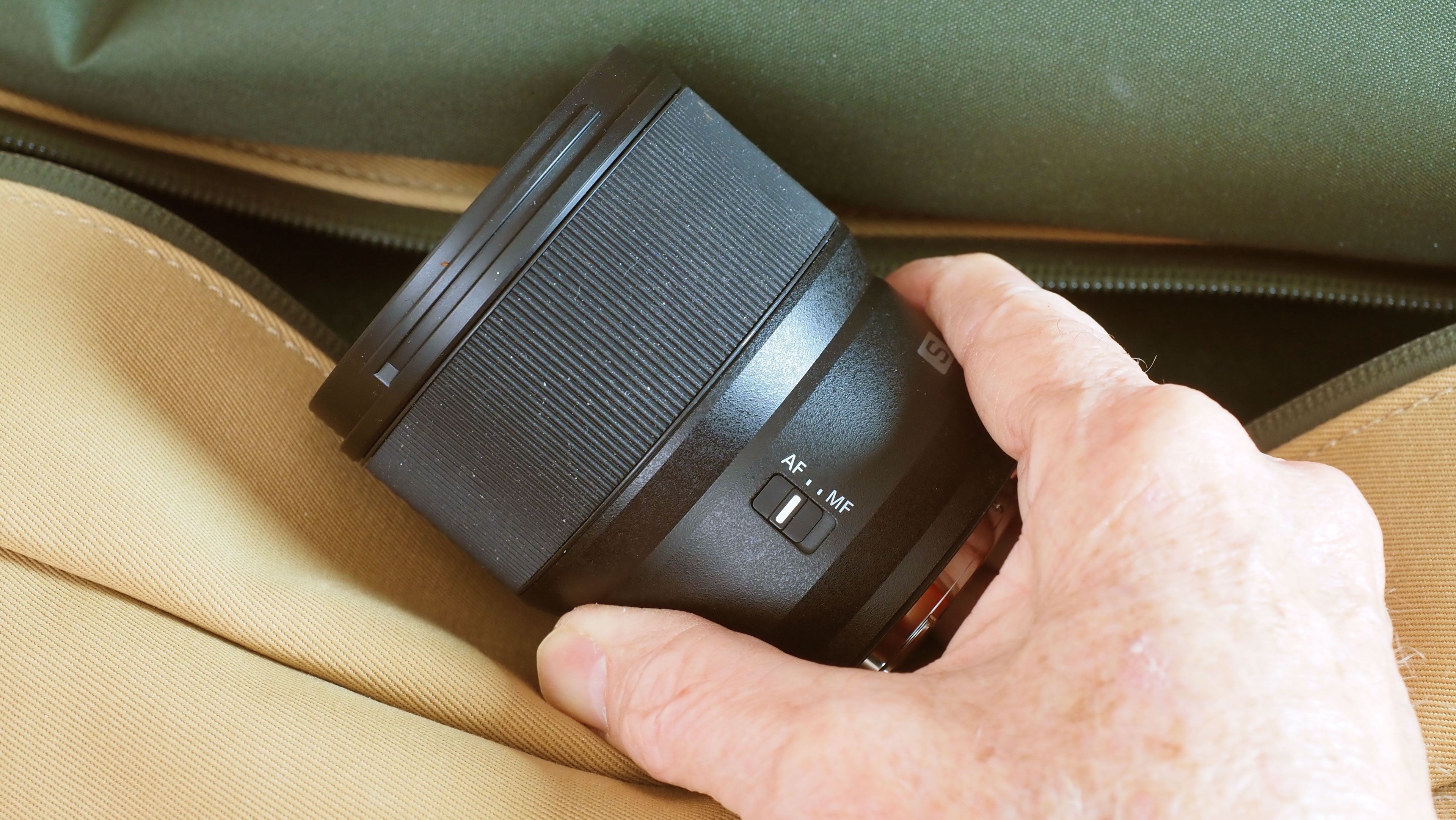
There’s no aperture ring, as the aperture is controlled solely by the camera body. This is where Sigma’s lenses do offer an advantage if you like physical control.
But what this lens does have is a remarkable physical consistency with the other lenses in this little sub-range of Lumix S f1/8 primes. The Lumix S 24mm, 35mm, 50mm, and 85mm are so close in size and weight that gimbal users might not even have to rebalance their rigs after swapping lenses.
For stills photographers, this lens might feel pretty plain and basic. But it does the job perfectly well, feels well made given the price, and does feature dust and moisture seals.
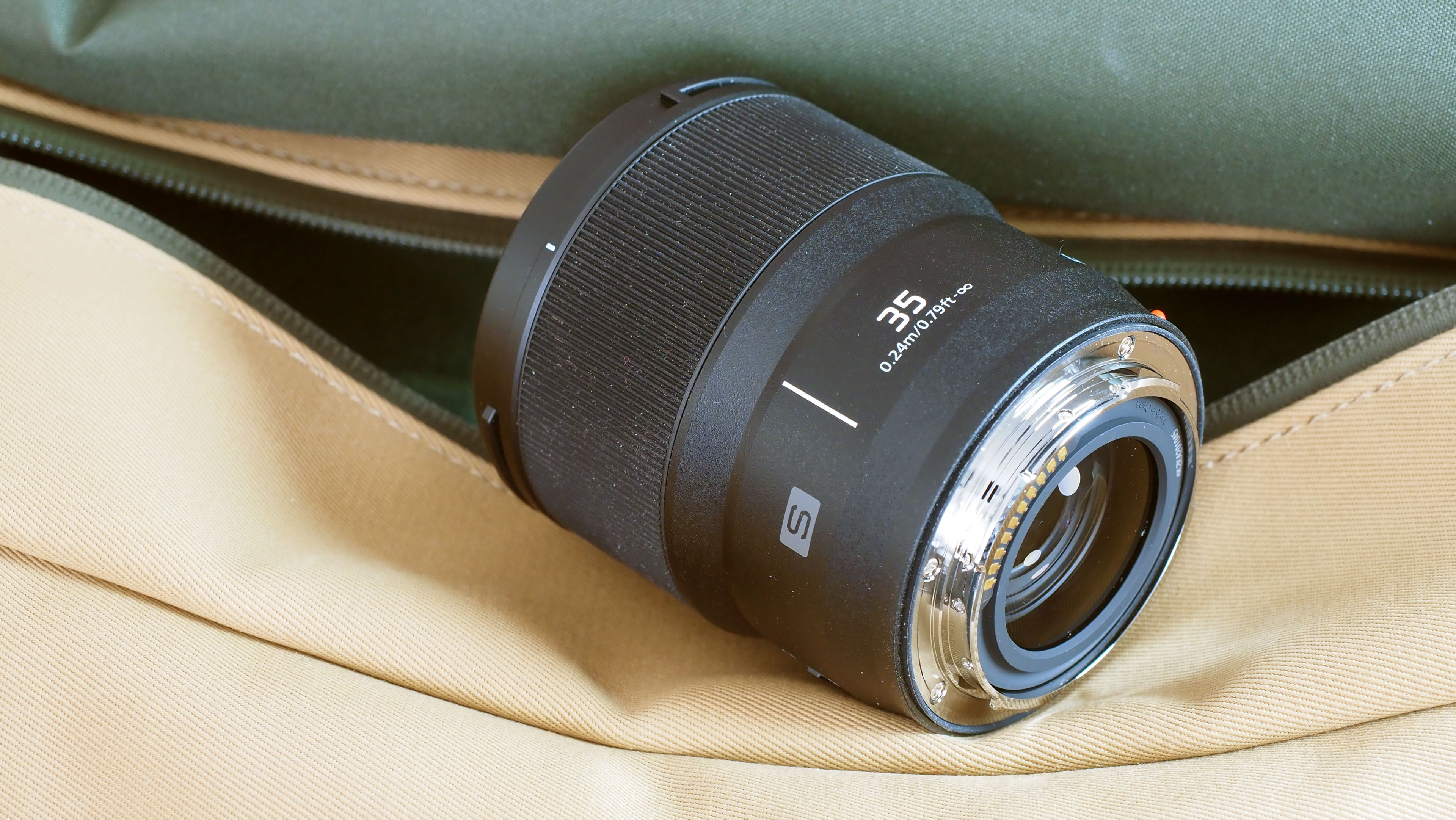
Panasonic Lumix S 35mm f/1.8 performance
Panasonic promises fast and accurate autofocus with this lens, and it doesn’t disappoint. In stills photography the AF is quick to cover large focus distance changes, and so silent that you only know it’s done it from the green squares in the viewfinder and the autofocus ‘beep’.
It’s just as effective when filming video, with fast, smooth and silent focus transitions. Panasonic says the design suppresses focus breathing, which is where the size of your subject appears to change as it moves in and out of focus. This is as bothersome for filmmakers as the right kind of bokeh is for photographers! Sure enough, it’s hard to see any focus breathing effect at all. Subjects appear to blur evenly without any apparent change in size.

The optical construction of this lens is fairly complex, with three aspherical and three ED elements, though its performance is good rather than great. The lab results show very good center definition right across the aperture range. The edge definition is less impressive, though perfectly adequate in this price range, and at its best from f/4 to f/11.
In practice, the Lumix S 35mm F1.8 delivers very good real-world results. Technically, the edge definition is lower at wider apertures, but you wouldn’t really notice it unless you looked hard, and this is a lens you wouldn’t hesitate to use wide open if the shot called for it.
The Lumix S 35mm F1.8 is a pretty plain-looking lens, but it’s very effective. The autofocus is terrific and the optical performance is very good for a lens in this price range. It’s a good, solid, affordable 35mm prime that delivers on its promises.

Panasonic Lumix S 35mm f/1.8 sample images





Panasonic Lumix S 35mm f/1.8 lab results
We run a range of lab tests under controlled conditions, using the Imatest Master testing suite. Photos of test charts are taken across the range of apertures and zooms (where available), then analyzed for sharpness, distortion and chromatic aberrations.
We use Imatest SFR (spatial frequency response) charts and analysis software to plot lens resolution at the center of the image frame, corners and mid-point distances, across the range of aperture settings and, with zoom lenses, at four different focal lengths. The tests also measure distortion and color fringing (chromatic aberration).
Sharpness:
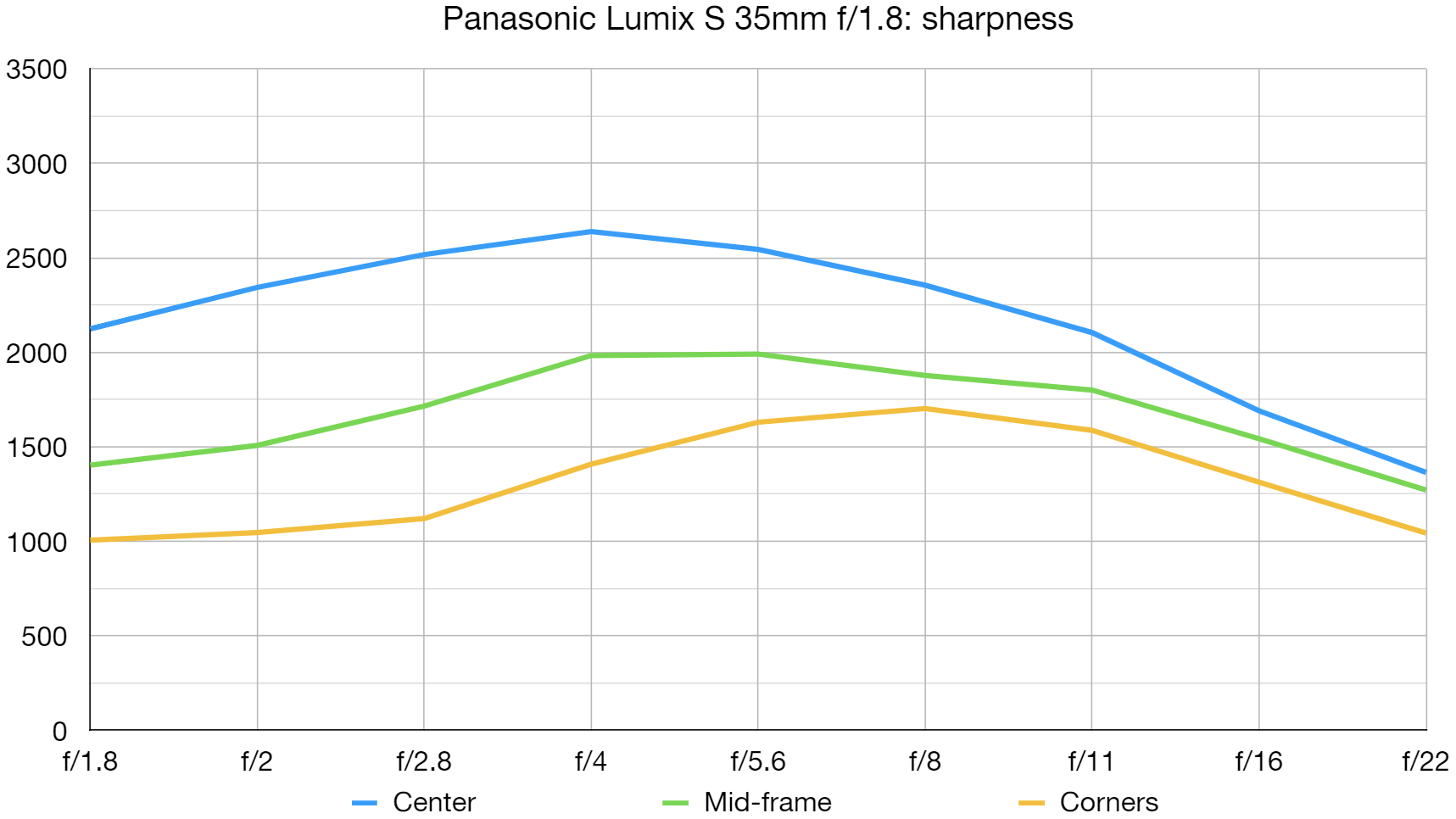
Center sharpness is excellent, even wide open at f/1.8, and stays so right through to f/11. Corner sharpness is a little softer than we'd expect from a lens of this focal length - you'll need to stop down to f/5.6 to get better results.
Fringing:
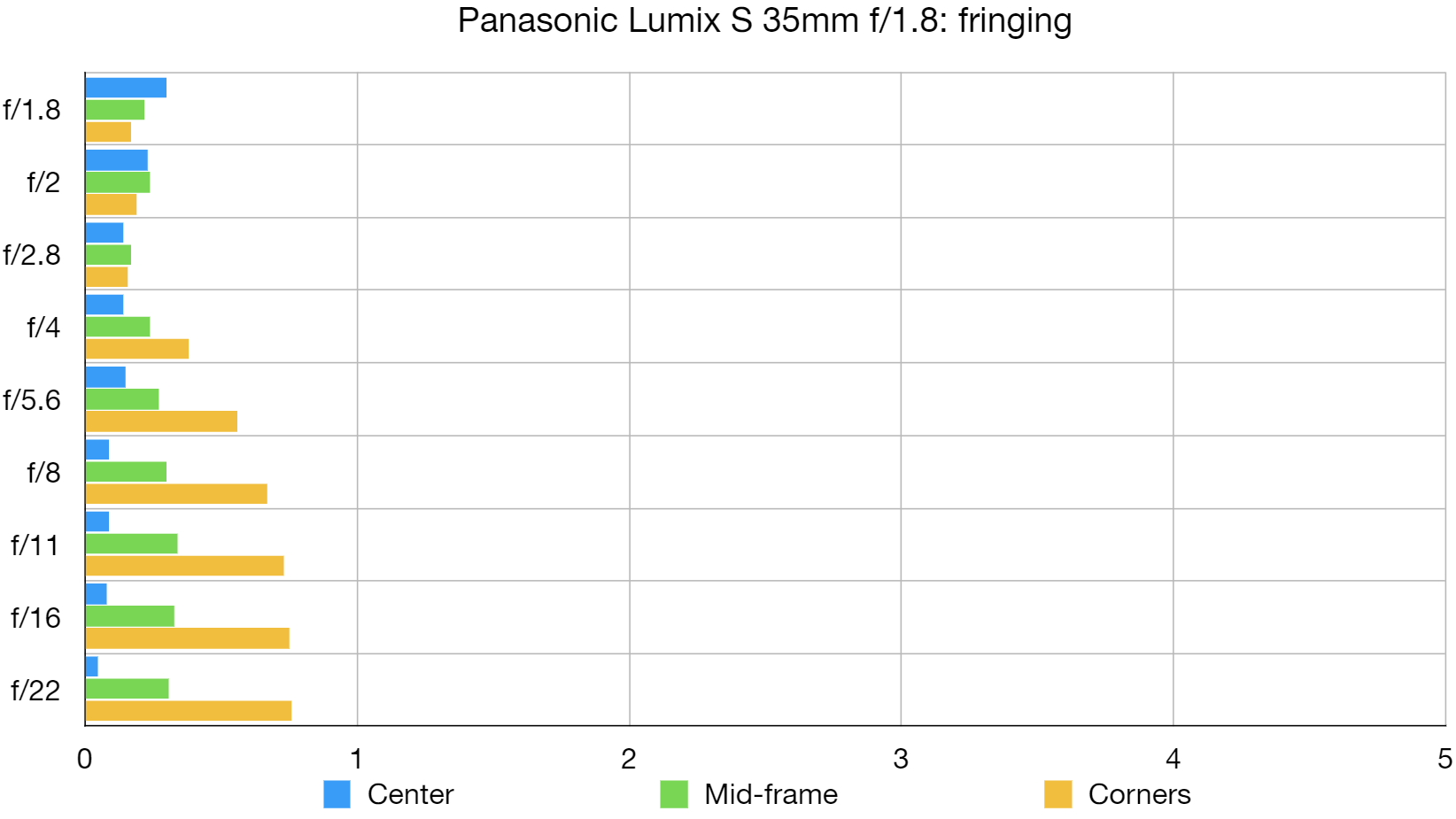
Color fringing is very well controlled at all apertures, never straying into noticeable territory.
Distortion: -4.66
Left uncorrected, barrel distortion is surprisingly prominent. Thankfully it's effectively eliminated through firmware correction.
Panasonic Lumix S 35mm f/1.8 verdict
There’s no glamor, glitz or bling about the Panasonic Lumix S 35mm F1.8. If anything, it’s rather plain. The focal length is etched in clear white on the barrel, there’s an AF / MF switch on the side and a focus ring on the front and that’s it. This is a practical, everyday lens that’s just there to do a job.
And it does that rather well. Once you get past that plain exterior you discover a lens with very fast and silent AF, very good resolution that gets even better as you stop down, very well-controlled focus breathing and, given all that, it’s very good value for money too.
It’s a good buy for stills photographers and helps make the Lumix S range one of the most affordable full-frame mirrorless systems. It’s an even better choice for filmmakers and content creators, not least because it’s one of a set of four near-identical f/1.8 primes that you can swap in and out without changing the balance, handling, and operation of the camera.
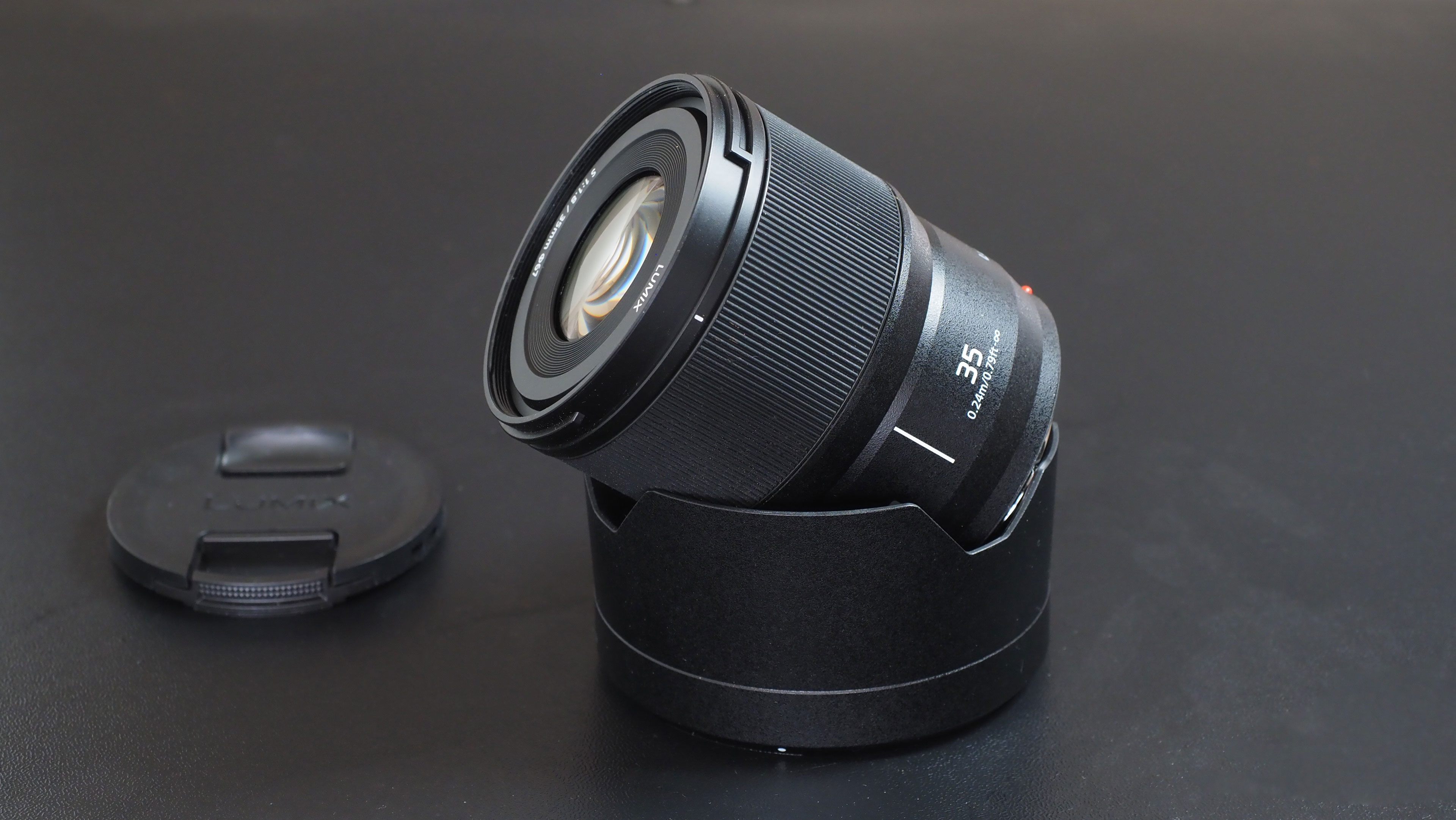
Should you buy the Panasonic Lumix S 35mm f/1.8?
✅ Buy this...
- If you want a well-performing f/1.8 prime with smooth and effective handling at a very good price
- If you’re a content creator aiming to build a set of fast and silent lightweight primes
🚫 Don't buy this...
- If you’re looking for state of the art optical performance and an ultra-fast maximum aperture
- If you like physical controls, notably an aperture ring. This is a bare bones design controlled from the camera body
Panasonic Lumix S 35mm f/1.8 alternatives
The Sigma 35mm f/1.4 DG DN Art is only a little more expensive than the Lumix S 35mm F1.8, but it has a faster f/1.4 maximum aperture, an aperture ring, and fabulous image quality. It’s a big lens for video work, but for stills photographers, the Sigma 35mm f/1.4 DG DN Art offers a clear step up in capabilities at a relatively modest extra cost.
The Sigma 35mm f/2 DG DN Contemporary is a little more expensive than the Lumix S 35mm F1.8 and has a slightly slower maximum aperture, but the Sigma is a real class act, both in terms of its build and engineering – which includes a physical aperture ring – and its optical quality. These will make it attractive to stills photographers, but video shooters might prefer the lighter weight and effortless AF of the Lumix lens.

Rod is an independent photography journalist and editor, and a long-standing Digital Camera World contributor, having previously worked as DCW's Group Reviews editor. Before that he has been technique editor on N-Photo, Head of Testing for the photography division and Camera Channel editor on TechRadar, as well as contributing to many other publications. He has been writing about photography technique, photo editing and digital cameras since they first appeared, and before that began his career writing about film photography. He has used and reviewed practically every interchangeable lens camera launched in the past 20 years, from entry-level DSLRs to medium format cameras, together with lenses, tripods, gimbals, light meters, camera bags and more. Rod has his own camera gear blog at fotovolo.com but also writes about photo-editing applications and techniques at lifeafterphotoshop.com

